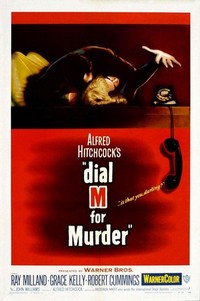
Dial M for Murder (1954)
U Spreekt met Uw Moordenaar

Raiting: ![]() 8,2 /10
8,2 /10
Genre: Thriller
Director: Alfred Hitchcock
Stars: Ray Milland, Grace Kelly and Robert Cummings
Country: United States
Release date: 29 May 1954
Length: 105 minutes


Raiting: ![]() 8,2 /10
8,2 /10
Genre: Thriller
Director: Alfred Hitchcock
Stars: Ray Milland, Grace Kelly and Robert Cummings
Country: United States
Release date: 29 May 1954
Length: 105 minutes